GLEN Roy is the place that thwarted Darwin. That???s Charles Darwin ??? the man who turned conventional knowledge on its head with his revelation that our ancestors emerged from the sea, not the Garden of Eden. Glen Roy is a snapshot in the evolution of the world; it is the original puzzle for lateral thinkers; and it???s the perfect place to spend a wet day in Scotland. That???s why I???m here. Dark clouds have swallowed the Nevis range and Grey Corries. I???m in Glen Roy ??? walking on sunshine . . .

One small section of the Parallel Roads on the Ordnance Survey Landranger maps. Please click the image to enlarge
On many occasions down the years, when planning walks around Fort William, my eyes have strayed to a series of curious markings on the Ordnance Survey Landranger maps. The markings are labelled ???Parallel Roads??? ??? and indeed, that???s exactly what they resemble on the map: roads running along the contours of the glen???s steep sides. In places there is only one road; in others two; but in several sections of the valley there are three on each side, one above the other, remaining equidistant and perfectly level as they slice across the terrain. They are, though, roads that go nowhere.
The Parallel Roads are not confined to Glen Roy, although that is where they are revealed in their greatest splendour. They veer north-west into Glen Turret; they can be traced along the sides of neighbouring Glen Gloy, spilling into Glen Fintaig; and they are in evidence on the slopes of Glen Spean, where they endeavour to entangle themselves with the course of an old tramway system, just to complicate matters.
So what are they, these Parallel Roads ??? something to do with the Forestry Commission, perhaps, or the Fort William aluminium smelting industry that spawned the tramways? Why have they been singled out, like the Borrowdale Yews, to be immortalised on our Ordnance Survey maps? They must hold some significance. It???s time to find out.
According to Celtic legend, they were roads used for hunting by the giant Fingal. He???s the bloke who slept in the cave on the island of Staffa and influenced Mendelssohn???s Hebrides Overture. He???s also the chap who hurled abuse and clods of earth at his Irish counterpart, Finn McCool, who retaliated by lobbing stuff back and inadvertently creating the Giant???s Causeway and any number of geographical anomalies between Ireland and Scotland. Fingal is, therefore, a bit of a Celtic cop-out who was woven into legend to explain the inexplicable.
The Parallel Roads have also been attributed to fairies. I like this notion. It???s somehow comforting to think there might be other beings in this world who venture out in the half-light of dawn and dusk to tramp mountain roads between places we can???t see. That would explain why the roads go nowhere. They actually do go somewhere ??? it???s just that the beginnings and the ends are obscured from the view of we humans. Perhaps if we climbed the slopes of Glen Roy in the chill air of pre-dawn, and sat motionless at the side of a Parallel Road with our plaid pulled around us, we might glimpse their shadows pass and hear their whispers. There again, maybe not.
In the 19th Century, intrigued by a phenomenon that appeared to be manmade though was presumed to be natural, the scientific community arrived at the conclusion that the Parallel Roads were not roads at all ??? they were beaches. That???s right, beaches. They were ancient shorelines positioned one above the other. But how did they get up there, hundreds of feet above the valley bottoms? Were they remnants of times when the sea was much deeper or the land a great deal lower? That was the tantalising question that captivated many eminent thinkers.
I???M going to digress here and take you back to 1977 and the Isle of Barra for some lateral thinking, because this is more or less how the problem was solved. It???s August and I???m camping on the outskirts of Castlebay after hitch-hiking around Scotland and down through the Outer Hebrides. A dozen tents are scattered along the shore, and at nights a mixed band of wanderers congregates round a fire to sing and tell tales. One of our number, a bloke from Norwich called Ian Hawthorn, introduces me to a concept called lateral thinking. This is where a puzzle takes the form of a short story, and the listeners have to unravel the mystery from the information they are given. Here???s an example:
A man walks into a bar. He says to the landlord: ???Sorry to bother you, but can I have a glass of water please???? The landlord reaches beneath the bar, pulls out a shotgun, points it at the man, shouts ???BANG???, and puts it down again. The man says thank-you and leaves. What???s going on?
It???s very tempting to let you work this out. But the answer is, quite simply, the man had hiccups. He needed a glass of water, the landlord realised what the problem was and decided a sharp shock would be more effective ??? which it was. Not that I advocate pulling a gun on someone to cure their hiccups ??? but you get the drift. So here???s a problem that has exactly the same solution as the mystery of the Parallel Roads, and why those beaches are halfway up a mountain. See if you can work it out.
In the desert there???s a tower, thirty feet high. There are no steps up the tower and no ladders. But a man has committed suicide in the tower and is hanging from the top by a 20ft rope. There is nothing in the vicinity except an empty lorry ??? parked some distance from the tower ??? which the man used to drive himself there. How did he climb the tower to kill himself? I’ll leave that one with you.
 Enter Charles Darwin, the man who bestowed on humanity the theory of evolution and changed the course of science. Darwin was intrigued by the Parallel Roads of Glen Roy and its neighbouring glens, and built on the work of his good friend and geologist Sir Charles Lyell, novelist and amateur geologist Sir Thomas Dick Lauder, and chemist and geologist Dr John MacCulloch. Lauder and MacCulloch favoured the idea that the beaches had been created by freshwater lakes ??? but they had absolutely no explanation for how the water had been boxed into the glens at such high levels. Darwin was adamant that the beaches were marine in origin. The Parallel Roads were ancient seasides.
Enter Charles Darwin, the man who bestowed on humanity the theory of evolution and changed the course of science. Darwin was intrigued by the Parallel Roads of Glen Roy and its neighbouring glens, and built on the work of his good friend and geologist Sir Charles Lyell, novelist and amateur geologist Sir Thomas Dick Lauder, and chemist and geologist Dr John MacCulloch. Lauder and MacCulloch favoured the idea that the beaches had been created by freshwater lakes ??? but they had absolutely no explanation for how the water had been boxed into the glens at such high levels. Darwin was adamant that the beaches were marine in origin. The Parallel Roads were ancient seasides.
Darwin visited the glens in 1838, and in 1839 presented a paper, entitled ???Observations on the Parallel Roads of Glen Roy, and of other parts of Lochaber in Scotland, with an attempt to prove that they are of marine origin???, to the Royal Society.
But Darwin???s theory of ocean beaches was wide of the mark. His lowest beach was 972ft above the present sea level. So that???s a great deal of sea that had disappeared over the years or a great deal of land that had risen out of the ocean. And what about the rest of Scotland? Where were all the raised beaches to prove his theory? They don???t exist, simple as that.
Yet beaches they are, the Parallel Roads, that???s for sure, all the way along these majestic glens. And if they were landlocked lakes, where were the colossal barriers that would have been required to hold back the water? They had disappeared without trace. Not one single scrap of evidence to support a barrier theory existed.
 Darwin???s theory of marine beaches held water for less than two years. His painstaking work was fatally undermined by Louis Agassiz, pictured left, a Swiss glaciologist and geologist who pioneered the concept that the world had at one time been largely covered with ice. He was, essentially, the man who invented the Ice Age. He took one look at the Parallel Roads of Glen Roy, Glen Gloy and Glen Spean, declared that the beaches had been formed by the freeze-thaw effect of landlocked lakes, and that the lakes had been hemmed in by a colossal barrier of ice.
Darwin???s theory of marine beaches held water for less than two years. His painstaking work was fatally undermined by Louis Agassiz, pictured left, a Swiss glaciologist and geologist who pioneered the concept that the world had at one time been largely covered with ice. He was, essentially, the man who invented the Ice Age. He took one look at the Parallel Roads of Glen Roy, Glen Gloy and Glen Spean, declared that the beaches had been formed by the freeze-thaw effect of landlocked lakes, and that the lakes had been hemmed in by a colossal barrier of ice.
 This barrier is now known as the Lochaber Ice Lobe and was formed during the final stages of the last Ice Age, about 11,000 years ago, thrusting in from the sea. It advanced in three stages, pushing the lakes up to three levels, and then withdrew in three stages, leaving the raised beaches etched into the mountains. When it finally melted it left no obvious trace ??? certainly none visible to scientists who had no idea an Ice Age had existed.
This barrier is now known as the Lochaber Ice Lobe and was formed during the final stages of the last Ice Age, about 11,000 years ago, thrusting in from the sea. It advanced in three stages, pushing the lakes up to three levels, and then withdrew in three stages, leaving the raised beaches etched into the mountains. When it finally melted it left no obvious trace ??? certainly none visible to scientists who had no idea an Ice Age had existed.
So how did the man hang himself in the tower? That???s right, he had a load of ice blocks in his lorry. He built steps up the tower with the ice and hanged himself from the top step. The ice melted and the water evaporated, leaving no trace. Louis Agassiz would have got it in a jiffy. Not impressed? Don???t blame me, blame Ian Hawthorn.
But spare a thought for poor old Charles Darwin. His theory became known as his ???gigantic blunder??? and he referred to it in private correspondence as ???that confounded paper of mine???. Which just goes to show that we can???t all be clever all of the time. I suppose evolution plays its part in this. Perhaps one day we will all be clever all of the time.

Looking along one of the Parallel Roads. It???s hard to believe, but about 11,000 years ago this was a lakeside beach. Can you spot the remains of the boat hire kiosk and short-stay parking sign?

Antlers on show in a barn at Brae Roy Lodge. It???s a sensible idea not to make noises like a stag at bay while exploring the Parallel Roads. Leave the pantomime horse outfit at home too
So here I am in Glen Roy. This is an absolutely fantastic place to spend a day when the rain is scything down on the high tops. I???ve taken a left turn off the A86 in Roy Bridge, headed north along a delightful single-track road up Glen Roy, and parked for a brew and Scotch pie in a parking area on the crown of a hill where an information board explains the origins of the Parallel Roads. I???ve then continued three or four miles to the end of the public road at Brae Roy Lodge, ditched the car, and continued on foot through some rather private looking estate buildings where barns are festooned with antlers and moles are in charge of the lawns.

Turret Bridge, which spans the River Turret, which flows from Glen Turret. The Parallel Roads are also in evidence in this glen

Looking down from one of the Parallel Roads into Glen Roy, where the River Roy cuts through glacial moraines. That???s a lower Parallel Road in the immediate foreground, by the way, running from the bottom left corner and rising to the right. The opposite beaches of the glacial lake can be seen on the mountain in the left of the background. This gives some idea of the lake???s depth
Beyond Brae Roy Lodge, Glen Turret branches off to the north-west while Glen Roy continues almost due east. The raised beaches are in evidence on all the slopes. Glacial moraines and banks of detritus fill the valley bottoms. This is a fascinating place. This is the final footprint of the last Ice Age in all its glory, etched into the hillsides and dumped in the hollows. This is pre-history leeching into the present and dragging itself into the future, making a mockery of that manmade thing called time. In Glen Roy, the past and the present are one.
So I climb to the highest Parallel Road, the uppermost beach of the deepest glacial lake, and stretch out in warm grass with the sun on my face. I really should have brought a deckchair and straw hat, but you can???t take everything into consideration. To the south, the Grey Corries are still imprisoned behind a barrier of dark clouds, but here in Glen Roy the larks are singing on the scented wind. And I haven???t seen another soul all day.
So there???s something to take into consideration, those of you who have never sampled the delights of the Parallel Roads. When the mist is low on the Ben, head for Glen Roy and its pleasant open skies. Next wet day at Fort William, I???ll venture over the fell into Glen Gloy and explore its corners. Meanwhile, while I???m lying here in the sunshine, I???ll retrieve from my deteriorating memory another of Ian Hawthorn???s puzzles, just to keep you on your toes.
A man lives on the 20th floor of a tower block. Every morning he takes the lift to the ground floor and goes to work. When he returns at night he takes the lift to the 15th floor then climbs five flights of stairs to his flat. Why?
Serious answers in the comments box, please. Okay, silly answers as well.
FURTHER READING:
- Charles Darwin’s paper?????Observations on the Parallel Roads of Glen Roy, and of other parts of Lochaber in Scotland, with an attempt to prove that they are of marine origin??? in a reader-friendly format and in its original form
- The Parallel Roads of Glen Roy and Forestry, Environmental History Resources
- Glen Roy, Landscape Fashioned by Geology, SNH Publications
- Wikipedia on Glen Roy
- The Parallel Roads of Glen Roy, In the Footsteps of Charles Darwin ??? a field guide by Martin Rudwick,??Geological Society of London, History of Geology Group
- Louis Agassiz, the man who gave us the Ice Age and worked out the origins of the Parallel Roads, went on to greater things. Read this paragraph from Wikipedia: “An ancient??glacial lake??that formed in the Great Lakes region of North America,??Lake Agassiz, is named after him, as are??Mount Agassiz??in??California’s Palisades,??Mount Agassiz, in the??Uinta Mountains, and??Agassiz Peak??in Arizona.??Agassiz Glacier??and Agassiz Creek in??Glacier National Park??also bear his name. A??crater??on??Mars??and a promontorium on the??Moon??are also named in his honour. In addition, several animal species are so named, including??Apistogramma agassizi??Steindachner, 1875 (Agassiz’s dwarf cichlid);??Isocapnia agassizi??Ricker, 1943 (a??stonefly);??Publius agassizi??(Kaup), 1871 (a??passalid beetle);??Xylocrius agassizi??(LeConte), 1861 (a??longhorn beetle);Exoprosopa agassizi??Loew, 1869 (a??bee fly); and the most well-known,??Gopherus agassizii??Cooper, 1863 (the desert tortoise).” That’s some legacy.

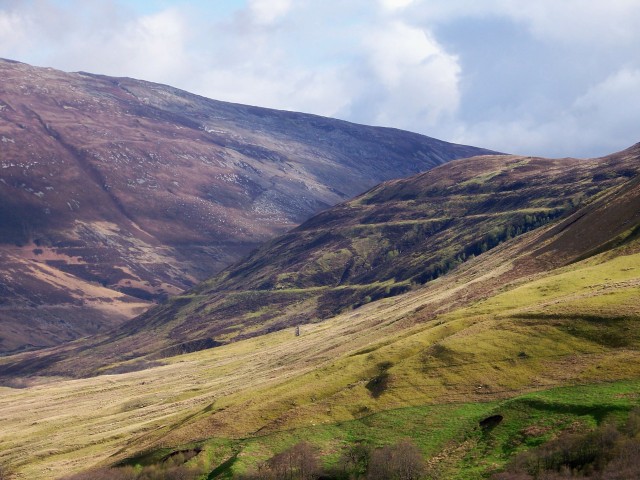

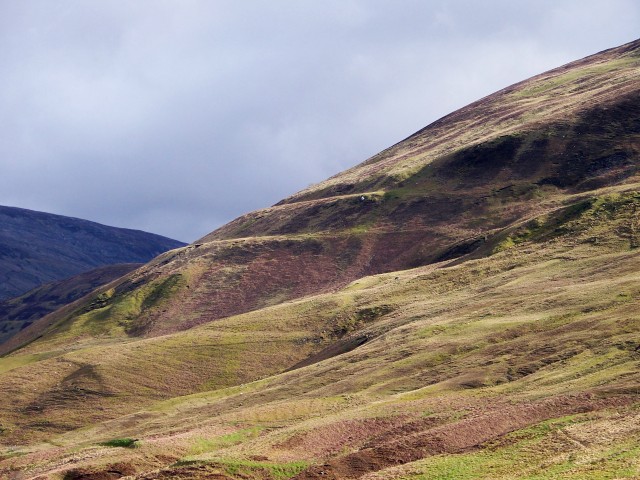




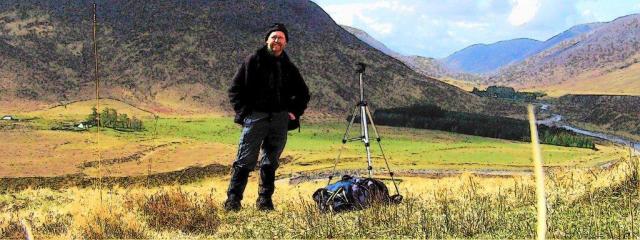
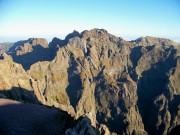

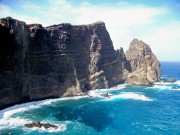
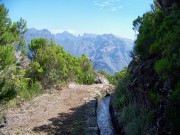
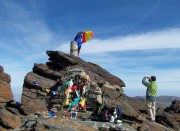

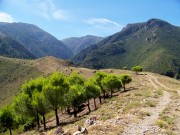
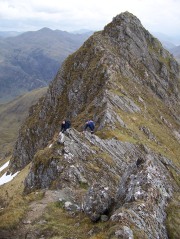
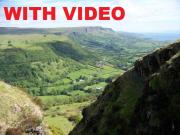
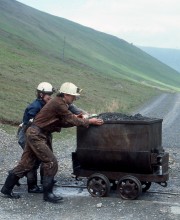
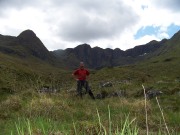

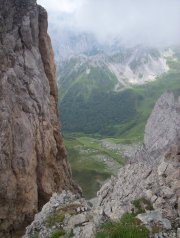
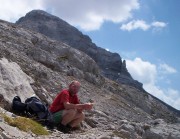
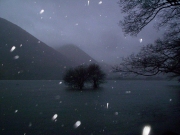
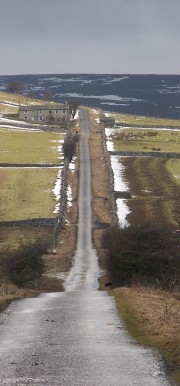
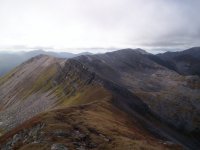
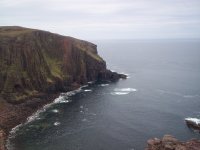

He walks down to the 15th in the morning: that’s as far as the lift goes.
Sorry Stewart. The lift goes all the way to the top and the bottom. But in one sense you’re very quick because I hadn’t finished posting the damned article and doing the contents connections before your answer came in. I think that’s a record.
I reckon he’s an accountant. He’s not a morning person and so when he goes into work he just wants an easy ride. He sits behind his desk all day dealing with numbers and gets very little exercise. His wife no longer looks at him in the same way as she used to all those years ago when he was fit and they were happy, and his father recently passed away with heart problems. He decides he needs to lose weight, however he’s a bit of a gym-phobe (it stems back to a holiday many years back and he went for a swim in the resorts pool and lots of french people nearby began to laugh at his lobster skin). So, being a believer in taking baby steps when trying something new, he decided’s each evening after work, when he’s more awake and has a bit more energy, to climb the last 5 floors by stairs.
p.s. I love the photos. I’ve only just started out hiking myself but that 3rd picture blows my mind at the scale of that height. I’m planning a trip across Iceland soon and will be exploring Scotland as part of my training (only due to vicinity as i’m in Sussex, England and Scotland is more accessible to me). Will be sure to follow your future posts.
Apologies for clogging up your comments with my ramblings. Was I right?
Chris, I???m terribly sorry but you are wrong. However, your answer was a story in itself and brightened up my day no end. I visited Iceland in the 1980s and thoroughly enjoyed it. You???ll have a great time. I would really like to go back there and see it properly. Cheers.
damn. i was sure I had it in the bag as well.
It’s a hard and cruel world.
I believe your explanation for the parallel roads is slightly incorrect.
If the shorelines had been created by progressive ice formation, the lower roads in Glen Spey would have been obliterated by the progressing ice sheet, wouldn’t they? I think the roads were caused by retreating ice, as the water flowed out over cols / bealachs that became exposed as the ice retreated. That way, the lower “roads” along Glen Spey would be left intact rather than being obliterated.
You can also link these “roads” to the numerous “Dircs” in this area as well. – Glacial outwash channels. (See Dirc Mhor, for example)
As for the lift question: Could it be that the buttons inside the lift car are jammed or don’t work for floors 16 to 20? (But if there are floors above the 20th, perhaps he could hit those buttons, should they work, and then take the stairs down to the 20th floor?)
The ice progressed in three stages and then retreated in three stages. I’m assuming the beaches were the result of the most recent action, which was the retreat of the ice, so yes, you are right, Alan. I haven’t heard that term for the drainage channels. That’s interesting. I shall look into that.
As for the buttons, they are all in perfect order. And there may well be floors above the 20th, but it doesn’t really make much difference.
You *will* put us out of our misery, won’t you on the vexed lift question?
Back to the ice. I don’t believe that the ice had three phases of withdrawal. I think it retreated however the climate dictated at the time. Why the beaches are where they are is dictated by the bealach heights over which the water escaped. Hence the three roads, not necessarily by the varying rate of retreat of the ice.
Of course I will. But not just yet because I’m at work and have other things to do. I read about the three stages in one of the links above. I can’t recall which one at present. Whoops. Boss coming.
be careful :- http://teddytourteas.blogspot.com/2012/01/warning-to-alen-mceff.html
That’s amazing Danny. Is there anything that you haven’t seen and photographed? Cheers.
p.s. he doesn’t have a buffet
I’ve been to Glen Roy a couple of times and stood in awe of the landscape. On a wild day when you don’t want to be any higher it’s a pleasant walk up to bothy and back. The last time I did it, there were many, many fieldfares and redwings to be seen. Did you see the BBC series (last year I think) about the history of geology in Britain? I seem to remember that it was some lowly employee at a Glasgow institute that confounded the knowledgeable experts in cracking many of the mysteries that had remained unsolved.
Hi Colin. I haven???t walked as far as the bothy ??? or if I did I didn???t see it ??? but I did make a mental note to continue up the glen sometime then bear north-west along one of the old General Wade roads. That really looks like a good low-level walk and one that could be incorporated into a few days??? backpacking.
On your other point, about the institute janitor, yes I did see the programme but I had completely forgotten about it. A quick flick through Wikipedia refreshes the memory and reveals him to be James Croll. Apparently he was largely self-educated, receiving only three years of formal education as a child. That???s some achievement.
Hi Alen did you see my p.s. on the Lift ?
cheers Danny
Sorry, that one came in under the radar. I was trying to keep an eye on things from work last night and it’s not easy when people are looking over your shoulder. No. You’re wrong, sorry Danny. A brave attempt, nonetheless.
Hi (again) I was trying to keep it cryptic, still criptic :- he’s vertically challenged
ABSOLUTELY SPOT ON
He had no trouble pushing the ground floor button in the morning, but on the return journey could not reach the button for the 20th floor ??? his arms stretching only to the button for the 15th.
Give that man a slap on the back ??? and the Teddy a bun.
Cheers Danny.
An excellent read and very informative Alen, I really enjoy reading about the landscape and how natural forces have shaped it. I had no idea about the parallel roads or for that matter the theorising and debate by the great man himself (even if he was a bit off the mark), yet another place to add to the list. As for the puzzle, it would have been a long while before I got that one – well done Danny.
Looking locally at glacial activity and the evidence it leaves behind the area around Ingleborough has always intrigued me and I have been over there a few times to photograph the erratics mentioned by Danny. I also noticed what looks like a postglacial landslide on its flanks (although no doubt someone will tell me its an old quarry) http://www.bluestoneimages.com/photo_7326743.html It is just below and to the right of the summit. Does anyone know if it is a quarry or whether it is actually natural?
Hi David. Thanks for the comments. I don’t know the Ingleborough area very well, though I did slog round the Three Peaks one very long day in the late Seventies and I’ve done some caving there. Looking at Danny’s pictures, I did feel a pang of guilt at perhaps neglecting this area over the years – because there are some spectacular places. Can’t help you with the landslide theory. It certainly sounds interesting though.
Great post as ever Alen and although I knew a bit about the origins of the roads you filled in a few gaps. Personally I prefer the theory about the fairies though. It would certainly burst a few egos in the scientific world as well as making a fine documantary. Fancy the job as Director?……….J
Thanks John. I liked the fairies theory too ??? that was my favourite. And yes, I would like a job as a director ??? very much. I’ll even buy my own chair. Cheers.
Nice to have those places where the sun and warmth can be found. By the time I ever get to visit I’ll have a fair idea of what morphology I’m looking at. I’m learning and I thank you.
Thanks for that. The pleasure’s mine. Alen.